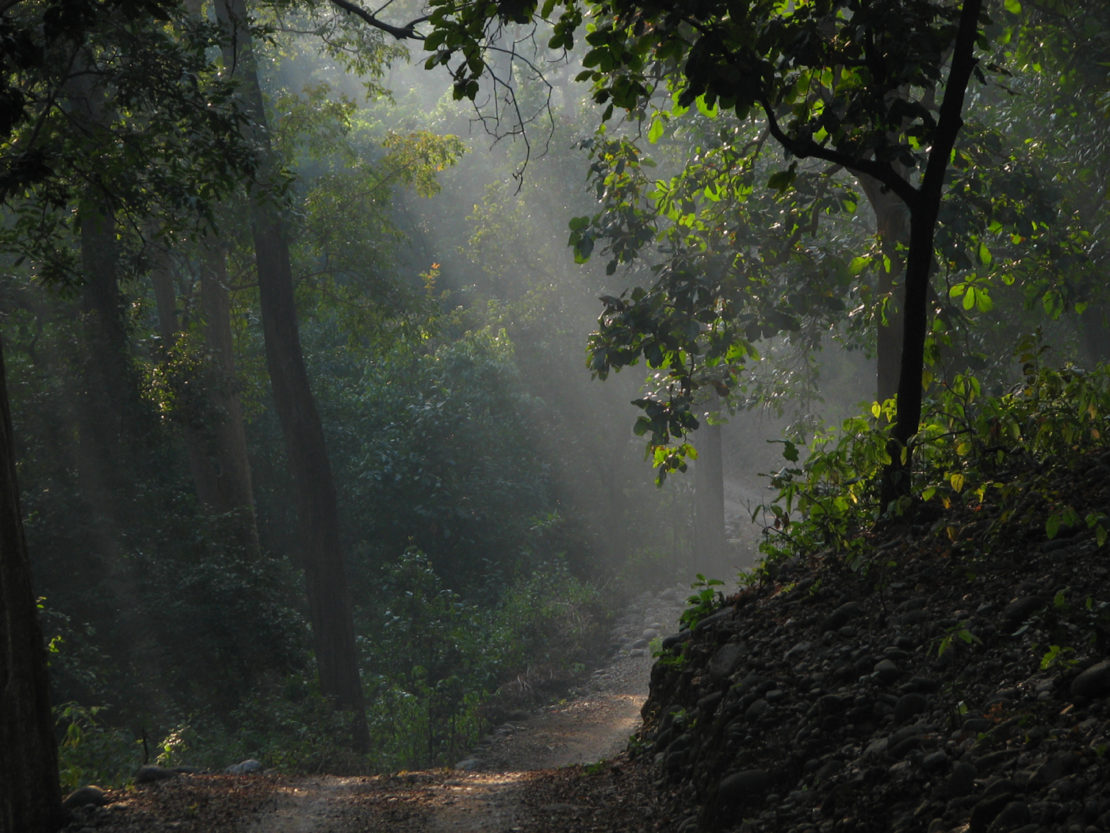
The forests bear the carbon
Amogh Rai is standing on a small patch of wooded hillside, his Android phone held up above him, taking in the canopies of the trees that rise up around us. There's a problem though. It's a winter's day in the northern Indian foothills of the Himalayas, and the sun isn't breaking through the clouds with its usual clarity. Rai is using an app on his phone to help him understand the canopy's interception of light, but a layer of haze is preventing the 27-year-old Indian from collecting any meaningful data.
Around him are some other tools of the trade: a portable device known as a ceptometer, used for measuring leaf area index; a spherical densiometer, for understanding canopy foliage and foliage covering the ground; and a laser rangefinder, which is used to estimate the height of trees but which has a tendency to malfunction. I'm six feet tall. The laser rangefinder is often convinced that I'm actually 17 metres.
What is happening here may resemble a comedy of elemental errors, but it has significance far beyond the mountainous forests of Kumaon, one of two regions in the state of Uttarakhand. Rai is working with a number of other ecologists and field assistants on the pithily titled research project, Long-term Monitoring of Biomass Stocks and Forest Community Structures in Temperate Zone of Western Himalaya.
Spearheaded by the non-governmental Centre for Ecology Development and Research (CEDAR) and funded by India's Department of Science and Technology, this project is about climate change. It seeks to find out how much carbon is being absorbed by the region's forests. This is achieved by taking the information collected – foliage overlay, the height of the trees, leaf area index and canopy layer, among other things – and using it to make an allometric equation.
Understanding the basic mechanism of carbon sequestration and the level of human disturbance in these forests can then provide the framework for a plan that seeks to pay local people to maintain the forests. If the project can determine how much human interaction with the forest has affected the trees' ability to photosynthesise, then local people can be paid to preserve the forest. Otherwise, its ability to act as a 'carbon sink' (anything that absorbs more carbon than it releases) risks damage from overuse.
Right now, the forests of Kumaon are used primarily for fodder and fuel. Traditionally, families in the area had as many as 15 or 20 cows of their own. These cows were particularly dependent on the forest leaves for fodder and bedding. The fewer leaves a tree has, the less able it is to photosynthesise properly. Today, there are far fewer cows in the area and so fodder use has come down by a multiple of four or five in the last 10 years. The market has come to Kumaon – once an isolated area – and artificial substitutes for fodder are now available to buy locally, with NGOs providing subsidies for this.
The challenge mirrors that faced across the world: how can you reduce emissions and maintain carbon sinks without disrupting the lives of local people, who will be those most affected by climate change?
But while the pressure on the forest to provide fodder has come down, the need for it to provide fuel has gone up. This is in the Himalayan foothills, after all, and it gets cold in winter. There is little central heating and so a serious amount of wood is needed for fires to heat houses and light stoves. Where extended families once lived together, with grandparents, parents and children all under one roof, now the nuclear family is becoming the norm, meaning that requirement for fuel has gone up. And if the people of Kumaon are to use the forest less, they need compensation, or they will have no fire to warm them through the winter months. Substitutes for wood are available but are unaffordable for most.
So the challenge for this project mirrors the challenge faced by climate change scientists and policymakers across the world: how can you reduce fossil fuel emissions and maintain and improve carbon sinks without disrupting or destroying the lives of local people, many of whom will be those most affected by climate change?
Last March, US science agency the National Oceanic and Atmospheric Administration (NOAA) released figures that showed record concentrations of carbon dioxide in the atmosphere, at over 400 parts per million (ppm). These levels are unprecedented in over a million years and have caused over one degree of warming. The level considered 'safe' – 350 ppm – was exceeded nearly three decades ago. Today's carbon concentrations represent a more than 40 per cent increase on those found in the atmosphere in the middle of the 18th century, before the beginning of the industrial revolution.
Sign up to our newsletter
Forests are an important part of this increase. They are, along with the planet's oceans, one of two major carbon sinks. Deforestation puts carbon into the atmosphere while at the same time removing that sink. "You can say that one quarter of this increase in carbon concentrations since the 18th century has been caused by deforestation," says Corinne Le Quéré, author of the Third, Fourth and Fifth Assessments of the Intergovernmental Panel on Climate Change (IPCC) and a professor of climate change science and policy at the University of East Anglia.
In 2014, the IPCC found that 11 per cent of global greenhouse gas emissions were caused by forestry and other land use. Other sources claim this figure is anything up to 30 per cent. While Le Quéré points out that the effect of deforestation was more pronounced in the 18th and 19th centuries, when it was a key driver in the process of industrialisation, she emphasises the ongoing importance of forests in the fight for a better environment.
"We have very big ambitions to limit climate change well below two degrees… In terms of delivering a policy to achieve this, you absolutely need to have your forest in place and you absolutely need to tackle deforestation, because you cannot reach that level of climate stabilisation without it. Reforestation and afforestation is one of the best ways to take CO2 out of the atmosphere and forests have so many additional benefits for cleaning the air, cleaning the water, and so on."
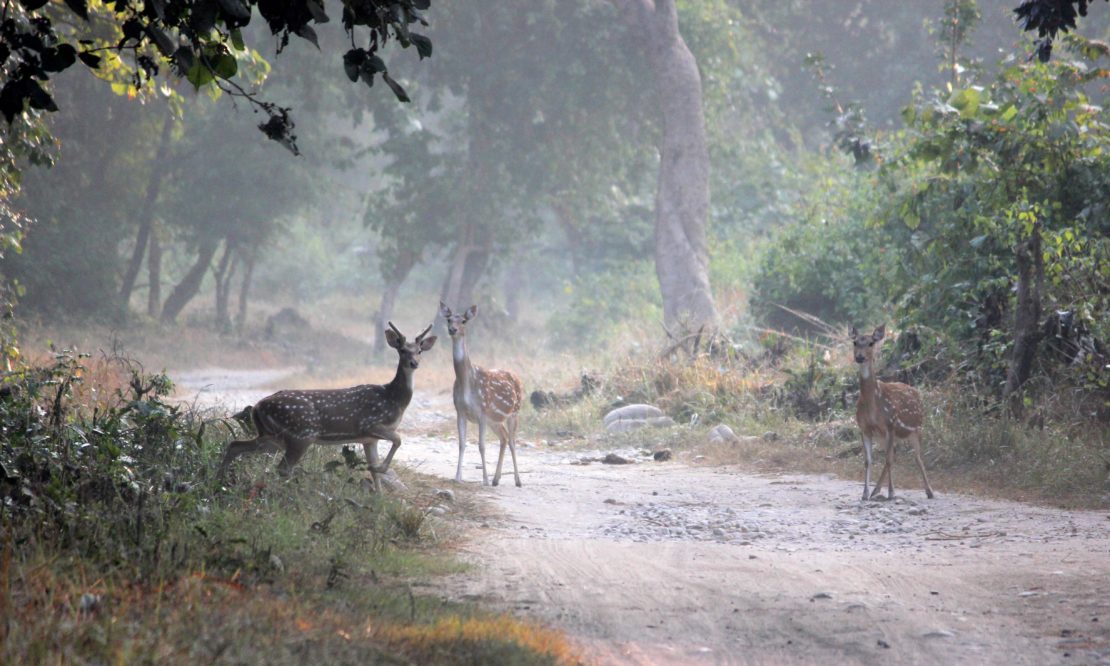
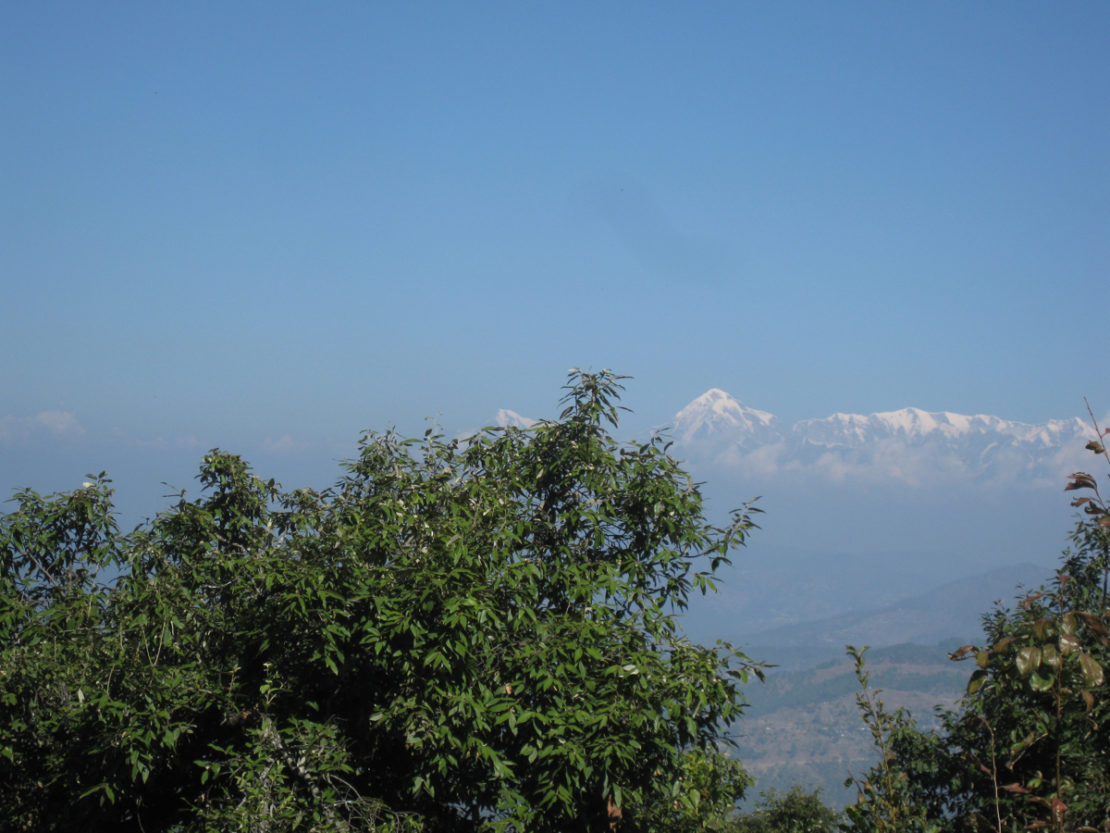
To begin working out how people in the Himalayan foothills might be reimbursed for preserving the forest, Amogh Rai and his colleagues need to find out how much carbon they are actually taking in. "We don't know how much carbon these forests are sequestering," says Rai. "If you are talking about the forest as a sink for carbon, you need to figure out how much carbon this place is storing, versus how much it is producing. And for that you need to go back to the basics of forestry. You need to figure it out by laying ecological plots measuring 400 metres squared in different areas, at different altitudes and in different disturbance gradients."
Rai started working on the project in March 2014. He grew up in Delhi and was something of a tech prodigy. But as his career was advancing at the kind of rate that would leave most people sick with jealousy, he also felt something akin to the call of the wild. More intellectually curious than professionally ambitious, he enrolled at Dr BR Ambedkar University as a master's student and, in December 2013, travelled to Kumaon to work on his dissertation, which was on a tree called Myrica esculenta, known locally as kafal.
"I love the forest because it is a place of silence and beauty," he says. "Also, it is one of the last places of refuge from strident urbanisation. A typical city kid reaction to noise, and tempo of life, I suppose." Rai's boss at CEDAR, Rajesh Thadani, a Yale-educated forest ecologist in his forties, is equally romantic about his attachment to the forest, quoting Thoreau to me: "I went to the woods because I wished to live deliberately, to front only the essential facts of life, and see if I could not learn what it had to teach, and not, when I came to die, discover that I had not lived." It's not hard to imagine both men communing with woodland spirits.
Kumaon's unique elements appealed to Rai. The area has two main types of oak tree, a number of pines, rhododendrons, cedars and maples. There are leopards, porcupines, wild boars, a variety of snakes and rodents, and 200 species of butterfly. The forests grow down hillsides into valleys and up along plateaus.
There are now 40 forest plots in Kumaon, and the hope is that in the next couple of years that total will rise to 100. One night, I join Amogh Rai for dinner at the house of one of his two field assistants, Narendra.
Now in his forties, Narendra is from Kumaon and has three small children. He doesn’t earn much but he is given supplementary income when he needs it and owns a small amount of land in the area. In a room furnished only with a single bed, we sit on the floor and eat food grown in the local fields: daikon, tomatoes sprinkled with marijuana ("Yes, dude, welcome to the Himalayas," laughs Rai), nettles, smoked chilli and bread. Having left school at 17, Narendra tells me he worked in a Nestlé factory and then as a mechanic, before realising that he'd rather be back in the rural village he came from. Haldwani, the nearby town he was working in, was too hot and he just loved the forest too much.
Locals may be paid to preserve the forest by using it less, but using the forest less will weaken their ties to it, thus making the desire to preserve it less urgent
This was in the 1990s, when Kumaon was a particularly remote part of the country. It still is, comparatively speaking, but the arrival of mobile phones, satellite technology and the expansion of the road network has changed the area. The population has grown and rich professionals from the city have begun to build second homes in Kumaon, drawn to the area, like the British before them, by the promise of peace and tranquillity in the mountains, by the chance to get away from it all.
Narendra remembers that, in these times, when far more people kept cattle, the forest was a place almost everyone used and understood. "We used to go out in a throng and bring trees down to use the leaves for manure, which is also used as a bedding for cattle," he says. "The animals would piss and shit on it and then it was used as manure." Today, keeping cattle has become economically unviable and artificial fertiliser can be bought at the market. As a result, fewer people use and understand the forest.
"There is a strong relationship between the people and the forest in the area but it has weakened, for good and for bad," Rajesh Thadani, who also worked closely with Narendra, tells me. Good because the forest is less disturbed, bad because caring for the forest now comes less naturally. "People don't quite have the same religious and cultural attachment to it. Cattle became unprofitable. The quality of schools hasn't got better but most children now go to school, so they don't want to do agricultural work when they leave… If you don't feel a sense of ownership and belonging, you are less likely to do things. The expectation of money has arrived. The forest has become an externality."
Most read
Fiction: Divided we stand, by Tim Maughan How Scotland is tackling the democratic deficit The Long + Short has ceased publishingThere is a conflict and a contradiction here: local people may be paid to preserve the forest by using it less, but using the forest less will weaken their ties to it, thus making the desire to preserve it less urgent. It's the kind of dilemma globalised industrial capitalism throws up everywhere. The system itself has wreaked havoc on the environment, but in a structure where even people in remote areas often aspire to a certain kind of lifestyle and expect to be paid for things they might once have done for free as part of the collective harmony of a community, the monetising of things like forest maintenance has come to be seen as a potential solution.
If a value is put on the forest, then, in a market-driven world, local communities will be able to better resist, for example, the planned construction of a massive hotel in an undisturbed patch of woodland. Right now, Rai argues, "you only have aesthetic reasons, but we live and operate in a world that has a different set of values. For the first time, you can give a number to the value of a forest. It becomes a place that is [about] more than wondrous beasts."
This expectation of money both jars with and is in keeping with Kumaon's past. When Rajesh Thadani first came to the area in the 90s, he was strongly influenced by Ramachandra Guha's book The Unquiet Woods, a short history of the Chipko movement published in 1990. A wonderful writer, Guha remains one of India's most influential thinkers on environmental and social issues. His and Joan Martinez-Alier's distinction between the 'full-stomach' environmentalism of the north and the 'empty-belly' environmentalism of the global south strikes a chord in Kumaon. There is a big difference between chopping down some trees in a forest to keep yourself warm in the Himalayan winter, and laying waste to the Amazon in the name of the fast food industry.
The Chipko movement was a phenomenon in 1970s India, an organised resistance to the destruction of forests across the country. The villagers who formed it were actual tree huggers: the word Chipko means 'embrace'. In one incident, women in the Alaknanda valley, responding to the Indian government's decision to grant a plot of forest land to a sporting goods company, formed a human ring around the trees, preventing the men from cutting them down.
In Kumaon, there is a strong history of this kind of resistance to exploitation by powerful forces. As Guha and the political scientist Arun Agrawal have pointed out, the villagers of the region did not take the impositions of the British Raj lying down. The 'empty-belly' environmentalism of India awakened early, a fierce reaction to the iniquitous and destructive development processes foisted on the country by the imperial power.
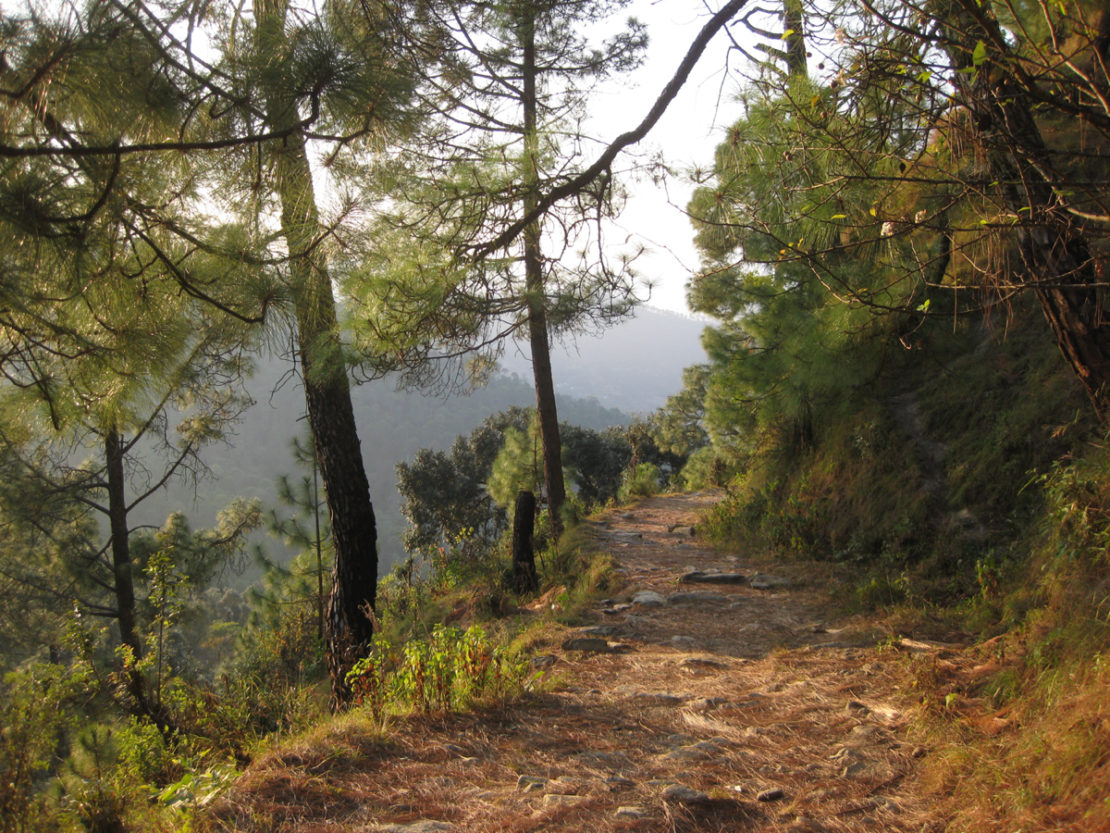
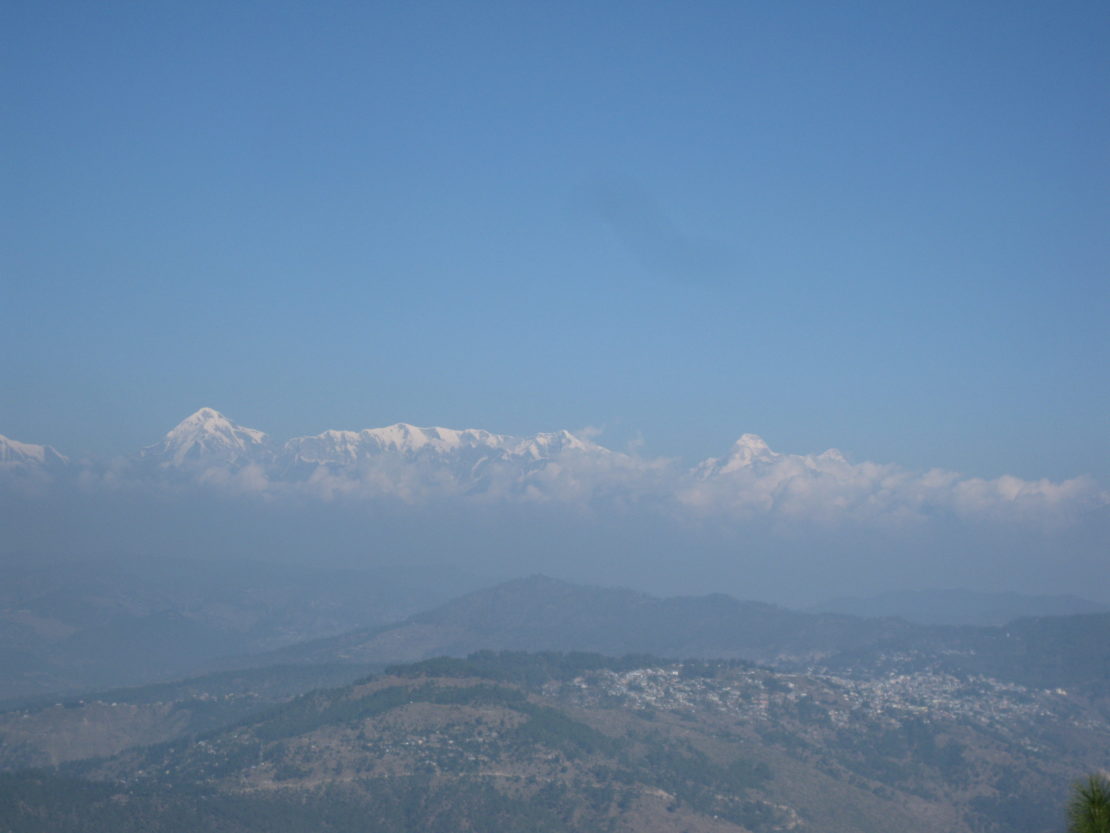
From the late 19th century into the 20th, the Raj introduced legislation that reduced the rights of local people to use their forests. From 1916 to 1921, villagers in Kumaon set hundreds of forest fires in protest against such legislation. They depended on forests for firewood for heating and cooking, manure for fields and fodder for livestock. This demand was seen as running contrary to the needs of the British, who wanted to carve up the forests of Kumaon to create railway sleepers.
This kind of practice didn't end with the Raj. "The government department once went on a rampage and planted cypresses all over the place," Amogh Rai says, laughing at the wasteful absurdity of the idea. "They planted them because someone who is a bureaucrat would have gone to England and thought, 'Oh, beautiful trees, let's plonk them up there.'
But the cypress doesn't bear fruit, its wood is rotten when it comes to burning, its leaves are spindly so you can't feed it to cattle. All in all, it's a shitty tree."
British officials used the excuse that local practices were environmentally destructive to defend the regulation of vast areas of forest. Nearly half the land in Kumaon was taken over by the forest department which, by the beginning of the 20th century, was endeavouring to protect land from fire as well as clamp down on cattle grazing and fodder harvests. In response to the regulations and reclassifications landing on them, villagers broke the rules. Fodder and fuel was extracted, livestock was grazed. British forest officers were fed misinformation like a fire is fed wood.
Protests became more common and led to massive demonstrations in the second decade of the 20th century. These together with forest fires intersected with outrage at the coolie system of forced labour extraction, under which villagers were obliged to work for the colonial administration. In 1922, the forest department's annual report conceded that local campaigning had led to the breakdown of British control of the forests. The Kumaon Forest Grievances Committee recommended the establishment of forest councils that, following the return of the land to the people, would manage forests belonging to the villages.
In 1931, the Forest Council Rules made this recommendation a formal reality and 3,000 elected forest councils – Van Panchayats – were created to manage the forests of Kumaon. Villagers could once again use their land the way they saw fit, free from the commercial priorities of the colonial government. This new plan to preserve the forests of the region in the 21st century is also being met with accusations of imperialism.
A handful of local NGOs give the impression that the government is "selling up the mountains". Though it is a plan driven by Indians rather than the British, it can still be seen by Kumaonis as coming from outside and on high, an imperialistic scam dreamed up "for their own good". Money, while desired, also generates suspicion. This is exacerbated by the fact that, two years ago, the Uttarakhand state government was given about $20m by the Japanese government and industry, which have a vested interest in promoting forestry around the globe.
The forests are great, we want to protect them but we don't have any money
No one seems to be sure what has happened to this money. There is a timber mafia in the region that is generous to local politicians, many of whom are widely believed to be corrupt. Since I left the area at the end of last year, a drought has resulted in a series of forest fires, which have not been dealt with properly.
It is hoped that the Van Panchayats – the forest councils – will be immune to the corruption found in local government and that they could hold the key to any scheme that seeks to compensate local people for maintaining the forest. These established councils can link villages to the money made available for forest maintenance. A tripartite system involving the Van Panchayats, the NGOs and the government could then be set up to make sure the money falls into the right hands.
Unlike carbon trading schemes or high profile incentive programmes like REDD and REDD+, the system for compensation envisaged in Kumaon would not be open to foreign tampering or carbon offsetting, though the question of the Japanese money complicates matters.
"In developing economies, green investment has not gained any worthwhile traction," says Rai. "In developed countries without much ecological diversity, an understanding of their importance is an important driver in decisions to invest in research in the developing world. So, it is beneficial. The problem arises when these 'investments' get turned into market-oriented solutions. So yes, when companies in Germany 'gift' improved cookstoves in Tanzania and earn carbon credit, it is a problem."
This 'gifting' is not what anyone has in mind for the Himalayan foothills. The idea is to create something fairly simple that can be executed neatly across a spectrum. A paper will be submitted to the Department of Science and Technology and then a conversation about incentive structures for the local community will begin, using the carbon sequestration data as a basis for what should be offered.
Explore
Moonshots for the Earth The inventions inspired by biology The plan to move an entire town two miles to the eastThere are fears about corruption; and the dispersal of money remains a sketchy and murky affair but, as Rai says, "the idea is that you at least need to get this thing started. If you don't pay people enough to maintain the forest, give me two reasons why they should keep the forests as they are, so that you or I could come and enjoy them? Because they are the ones who have to face the winters here, they are the ones who have to go and work in the forests here." Consultations are ongoing with villagers, various NGOs and the forest department.
Once upon a time, the strong social system – the ecologically minded functioning of the rural villages extolled by Gandhi – and dependence on the forest meant the environment was preserved. Now, these things are changing fairly rapidly. The whole idea of working as a social group is getting lost and so, Rai argues, "incentives are going to play a larger role. I've had conversations with people where they've said, 'The forests are great, we want to protect them but we don't have any money.' So it's not just about giving them an incentive to protect the forest, it's that they need money to protect the forest."
With the data now collected, allometric equations will determine how much carbon is sequestered in the forests. This information will then be used to put an economic value on the various plots, which will translate into payments made to local communities through the forest councils. This money could begin to pour in within the year.
During my time in Kumaon, the Paris Climate Change Conference takes place. When I ask Rajesh Thadani how CEDAR's project fits into the bigger picture, he says: "Carbon sinks are important and a good mitigation measure – but [they] would be effective only in conjunction with other measures."
I watch some of the news coverage from Paris with Rai. There is so much to be done, so many vested interests to vanquish. "I find it extremely political," Rai says. "Climate change talks are an interesting window into how the world that doesn't actually work on scientific principles or doesn't understand the science behind global warming – which is an extremely complicated science – operates. I find it interesting, working in a forest over here, to hear about these things; interesting and funny." As the world fights over how best to tackle climate change – over how, more importantly, to get any of the world's big polluters to do anything differently – a battle about how this global phenomenon should be understood and dealt with takes place in the foothills of the Himalayas.
"Darkly funny?" I ask Rai for his assessment.
"Yeah, gallows humour."